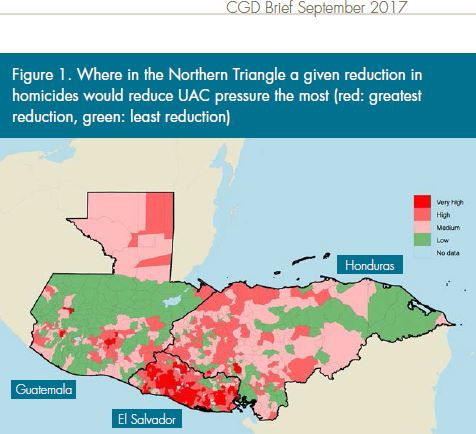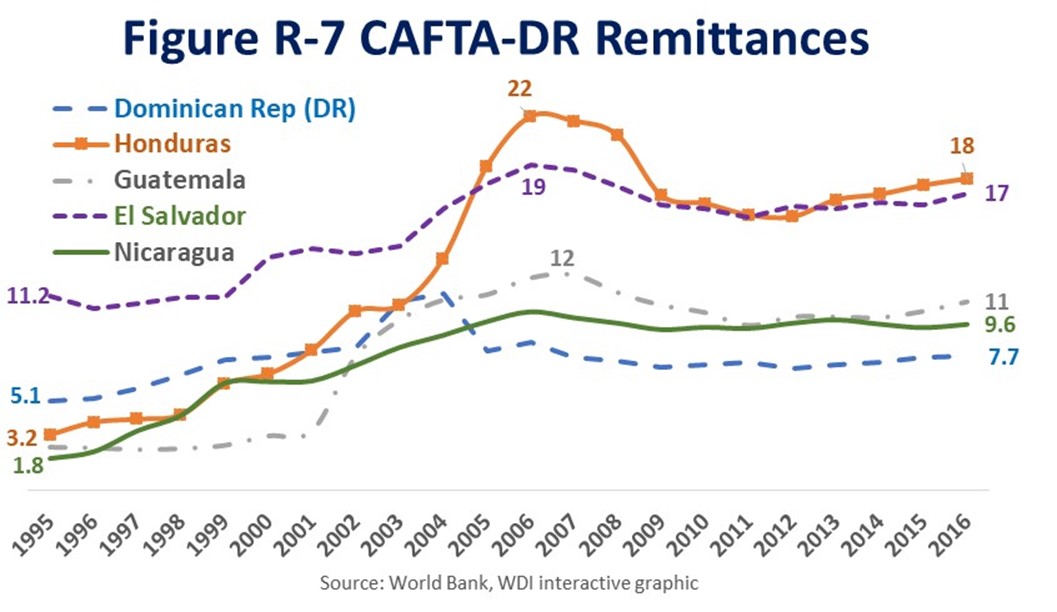MLK&LBJWaronPoverty
In Jan 8th, 1964 Lyndon B. Johnson us his State of the Union to declare “unconditional war” on Poverty in the United States, especially Appalachia (before the Gulf of Tonkin Resolution that August foreshadowed a larger War in Vietnam). Many Credit JFK’s reading socialist Michael Harrington’s book The Other America for drawing attention to persistent poverty in an otherwise booming post-WWII economy (with other Industrial economies debilitated by war and cheap oil form Iran America
Brazil Case Study
Changing gender roles in Brazilian Samba circles
22nd Annual LACEA Meetings in Argentina

We are pleased to announce that the process to elect the Vice President for the period 2018-2019 (to become President for the period 2020-2021) and six new members of the Executive Committee for the period 2018-2021, is now open and will close on November 19th, 2017 at midnight. Please submit your votes here.
Announcement of President Emeritus Awards to Professors Albert Fishlow and Nora Lustig
Congratulations to Professors Albert Fishlow and Nora Lustig for their new title of President Emeritus in recognition for the creation of LACEA. The award ceremony took place in the context of the 2017 meeting of LACEA in Buenos Aires, November 10 (Hotel Inter-Continental, 12 PM). Read the whole announcement here.
Sobre México: Temas de Economía,managed by Universidad Iberoamericana-Ciudad de México is currently seeking manuscripts with applied work on the Mexican economy. The Journal publishes online as soon as they are in final publishable form. The journal accepts articles in English and/or Spanish. Please visit this site or write to isidro.soloaga@ibero.mx for further information.
OnlineColleges.net features resources for prospective and current students to cover all topics from applying to college to staying healthy to landing a job after graduation. Recently, the site added a resource guide that provides students with an overview of what open online courses are and how they can be useful for those interested in additional learning opportunities. For more information, you can find the resource here.
LatAm Case study resources
ECON 3235 Fall 2019 Country Case Study Resources
Sample presentations
Angel Melguizo and Paula Cerutti OECD Development Center, Youth Skills & Entrepreneurship in LatAm & the Caribbean Barbados 2017 pptx
Everyone has their country now and starting sooner is better,
- Start with the three standard slides pick your own template, wood floors are Ok but there just because they are the first template suggested by PowerPoint (please do use PowerPoint, version of Office does not matter, google sheets is Ok but hard to share…
- Meet with me or send me an email to discuss your a tie-in to the course identified by page number and a new idea & a relevant article or book cited on on google scholar.
- Remember the 666 rule: see the WBI VC guidelines Case Study preparation: Getting started peers and templates
LAC Equity Lab is a great resource, but interactive graphics are not necessarily perfect for PowerPoint, just grab a few key numbers, here are examples Chile and the Dominican Republic… a short video?
For a country case study, you almost always need:
- Growth: your country’s post 2000 “Golden Decade” (now, outlook?) always add a growth incidence curve when possible,
- Inequality trends, the Gini coefficient and/or the inequality ratio fall?
- Education enrollment trends by gender
Remittances are important for Northern Triangle and Caribbean countries
Dana Nelson’s 2017 Chile Presentation Escaping original sin: Chile on the road to redemption, then graduated post 2000…
Accelerating Opportunity for Women in Mexico WWB Aid vs. Remittances
Migration, Remittances and Financial Inclusion: Challenges and Opportunities for Women’s Economic Empowerment
MDP in Bolivia Multi-Dimensional Poverty in Mexico
Case Study Guidelines U.N. Climate Projects, Aimed at the Poorest, Raise Red Flags
Here is the 2017 $2 and $4/day poverty data spreadsheet)
Lima Presentation 2012&2014 Four Crises in Microfinance
Ananya Roy, Poverty Capital Chapt 1
Ricardo Hausmann, To Profit or Not to Profit? PBS Compartamos video
Compartamos Evaluation Empower Women
WSJ on LatAm Murder Rates in Latin America Sept 20th 2018
Check your country’s latest $1.9/day and $4/day poverty rate for Gini & more see Povcalnet at the WB
The Economics of Happiness in Latin America, 2011 AmericasBarometer Insights #58 Margarita Corral Vanderbilt
Please do Present your presentation to the class (in person or via
What if i am part of a group working on a particular jurisdiction? (Puerto Rico for example)
Other Case Study Resources: *Textbook Tables and Figures comparing countries.
Spreadsheet for Table LAC-1 & Table LAC-2: Table DB-2 Oct 2017 WEO Data Case study page Resources Puerto Rico & DB 2018
Thinking of an ECON 3235 class presentation? please use this checklist,
⇒ 3. Please follow the WB Virtual Classroom Guidelines including minimum font sizes, 666 rule
⇒ 4. All Figures and Tables should be uniquely numbered, relate each figure to a argument of your presention.
⇒ 5. Add slide numbers before you submit your presentation so I can comment on slides. At ECON 3235 and Fall 2017 to the footer.
⇒ 6. Add standard format references at the end of your presentation, this is unusual I know, but this is really a short paper/presentation hybrid
⇒ 7. Please reference our text where possible. It the text seems to have nothing to say relevant to your country presentation, check with me.
⇒ 8. Every key point/figure/Table should should have an author,date, page. *See the handout on references,
⇒ 8. Be sure to start and end with a slide summarizing your key points.
*Presentations should always have a goal to communicate a few key points… you only have 15 minutes! Here is an example for Guatemala, a challenge because it is a relatively small country, Brazil is difficult because it is so large! See the Case study presentation guidelines for some suggested key points for both of these presentations.
Case study resources and formatting tips
- For Basic ideas and recent data see the World Bank LAC Country pages; CEPAL Social Surveys and IMF Article IV reports
- Do please make use of Armendáriz, Beatriz, and Felipe Larraín or A&L (2017) The Economics of Contemporary Latin America. MIT Press.
- For country case studies (CCS) focused on restarting growth, start with A&L, 2017 Chapts 1 & 12
- For CCS focused on getting started (or managing a crisis) see A&L,2017 Chapters 7-9 & perhaps 10
- For CCS focused on making it easier to do business focus on A&L, 2017 Chapter 10 & 11.
- For CCS focused on poverty and redistribution, start with Chapter 5 then go to the CEPAL CCT survey or CEQ and/or PovCalnet at the WB
- For CCS focused on political economy A&L see Chapter 6 and various BBC, Economist, Americas Quarterly or Guardian country pages for election updates .
Slides, follow the WB Virtual Classroom Guidelines if you can (e.g. the 6-6-6 and minimum fonts rule…). If you are a group, each of you should prepare at least six points spread over at least two slides with a Figure, or a Table and/or a picture with clearly relevant and legible materials (see the pictures in brains and brawn below).
Here is a sample presentation on Roy’s Brains vs. Brawn model in India, BGD and Brazil **(note summary of key points at beginning and end, and references on almost every page, including photo credits.)
http://www.ifpri.org/publication/climate-change-impacts-prospects-2050-brazil-mexico-and-peru
References how to find, create and then add to the last one or two slides. **Other versions of Brains vs. Brawn (pptx and pdf )
see also Edx Courses Global Poverty on Development Policy
Note that this is a great diagram, almost legible (add a few numbers and it may work). However we cannot use it because it is really an interactive graphic. I downloaded the data for this figure into a csv file (easy) and
http://www.pewhispanic.org/2017/12/07/rise-in-u-s-immigrants-from-el-salvador-guatemala-and-honduras-outpaces-growth-from-elsewhere/?utm_source=Pew+Research+Center&utm_campaign=9b61bba0c9-HISPANIC_2017_12_8&utm_medium=email&utm_term=0_3e953b9b70-9b61bba0c9-399378001
How is Argentina doing now, a Macri update from our friends at VP. They are a bit hard on the Kirchners, they did reduce poverty and increase transfers and liberalize the exchange rate regime a bit. However, they misreported inflation and punished private economists who tried to publish real data (one good thing is that we now have the billion prices project to monitor inflation worldwide…)
- 1
- 2
- 3
- …
- 9
- Next Page »









